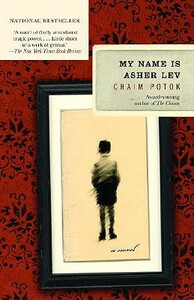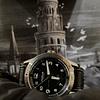Take a photo of a barcode or cover
2nd time through. The end - excruciating. So glad I indulged myself in this book a second time.
Teaching this book in my first-year seminar. The last time I read it was in college, and I remember thinking it was one of the best novels I read, that I related to Asher's deep calling to create because I wanted that deep calling, too. This time, I resonated with the mother, fraught with worry for her son, torn between the competing desires of her spouse and her son. For me, a study in how the same book can have completely different impacts on its reader.
emotional
reflective
medium-paced
Plot or Character Driven:
Character
Strong character development:
Yes
Loveable characters:
Yes
Diverse cast of characters:
No
Flaws of characters a main focus:
Yes
I read this again in 2018, and my appreciation for this increased from its already high level. There are pieces I missed earlier in my life, and they scream at me after the last few years: the tension between fundamentalist religion and the pursuit of artistic truth; the need to express the deep suffering in the world, rather than gloss over by only expressing the good.
This is rich, layered brilliance.
This is rich, layered brilliance.
challenging
emotional
reflective
medium-paced
Plot or Character Driven:
Character
Strong character development:
Complicated
Loveable characters:
Complicated
emotional
reflective
sad
slow-paced
Plot or Character Driven:
Character
Strong character development:
Yes
Loveable characters:
Yes
Flaws of characters a main focus:
Complicated
I loved how well weather was integrated into this book. The buildup in this book is very subtle and, for me, it added to the punch of the final fifty odd pages. The writing style was very austere and the use of repetitive phrases allowed for layered images that had me really in Asher's head. I was pleasantly surprised at how much I enjoyed this book. I have a tendency to enjoy art with tension between the sacred and profane and a good dose of family/community tension.
Chag sameach!
Chag sameach!
This is a beautiful story of an Orthodox Jew boy with an exceptional artistic talent and his struggle to find balance with these two defining parts of his life. What I love about this is how realistically Asher’s feelings are portrayed, especially in his younger years.
***
2017
Laskin tähteä yhdellä. Kirja oli edelleen minusta hyvä, mutta en ihan tavoittanut sitä tunnetta, jonka sain sen lukemisesta ensimmäisellä kerralla. Aihepiiri on viiden tähden arvoinen; teemoina taide, juutalaisuus, new york, perhe sekä lapsen maailma ovat heikkoja kohtiani.
***
2017
Laskin tähteä yhdellä. Kirja oli edelleen minusta hyvä, mutta en ihan tavoittanut sitä tunnetta, jonka sain sen lukemisesta ensimmäisellä kerralla. Aihepiiri on viiden tähden arvoinen; teemoina taide, juutalaisuus, new york, perhe sekä lapsen maailma ovat heikkoja kohtiani.
My Name is Asher Lev is a beautifully written story. It is about a culture clash in a Hasidic Jewish Family as their son grows to be a gifted artist. "Artist" is not a respectable occupation in Asher's community nor is art encouraged as a hobby.
However, the Rabbe of their community arranges for Asher to have an art instructor, Jacob Kahn, a non-practicing Jew. Asher tries to straddle the world of his Hasidic community and that of the art world with some success and many failures.
I really enjoyed the book. I found a 20 minute interview on DVD with the author at my library. My Name is Asher Lev is partly based on Potok's own experience. Potok painted for several years until he was in his mid-teens and then had a life changing experience with books. He became a writer but still paints as well.
I have been trying to imagine what this sort of culture clash would look like in my own family. My husband is an artist so I sympathize with Asher more than the Hasidic Community. But I have been trying to imagine what sort of occupations I would have a similar reaction to for my own son. It has been interesting to ponder.
However, the Rabbe of their community arranges for Asher to have an art instructor, Jacob Kahn, a non-practicing Jew. Asher tries to straddle the world of his Hasidic community and that of the art world with some success and many failures.
I really enjoyed the book. I found a 20 minute interview on DVD with the author at my library. My Name is Asher Lev is partly based on Potok's own experience. Potok painted for several years until he was in his mid-teens and then had a life changing experience with books. He became a writer but still paints as well.
I have been trying to imagine what this sort of culture clash would look like in my own family. My husband is an artist so I sympathize with Asher more than the Hasidic Community. But I have been trying to imagine what sort of occupations I would have a similar reaction to for my own son. It has been interesting to ponder.
I have seen multiple copies of this book on the bookshelf of my synagogue for years but only picked it up because I had enjoyed Chaim Potok's other works so much. This book is similar. A boy entrenched in Hasidic Judaism in New York is interested in being something other than what his community things is the holy and correct way to be. As he discovers more about himself, he grows away from his family and his community.
I have various problems with the Potok's themes, but putting that aside, the book is a well-written dive into the head of a budding artist struggling to handle his gift as well as expectations of who he will become.
I have various problems with the Potok's themes, but putting that aside, the book is a well-written dive into the head of a budding artist struggling to handle his gift as well as expectations of who he will become.



